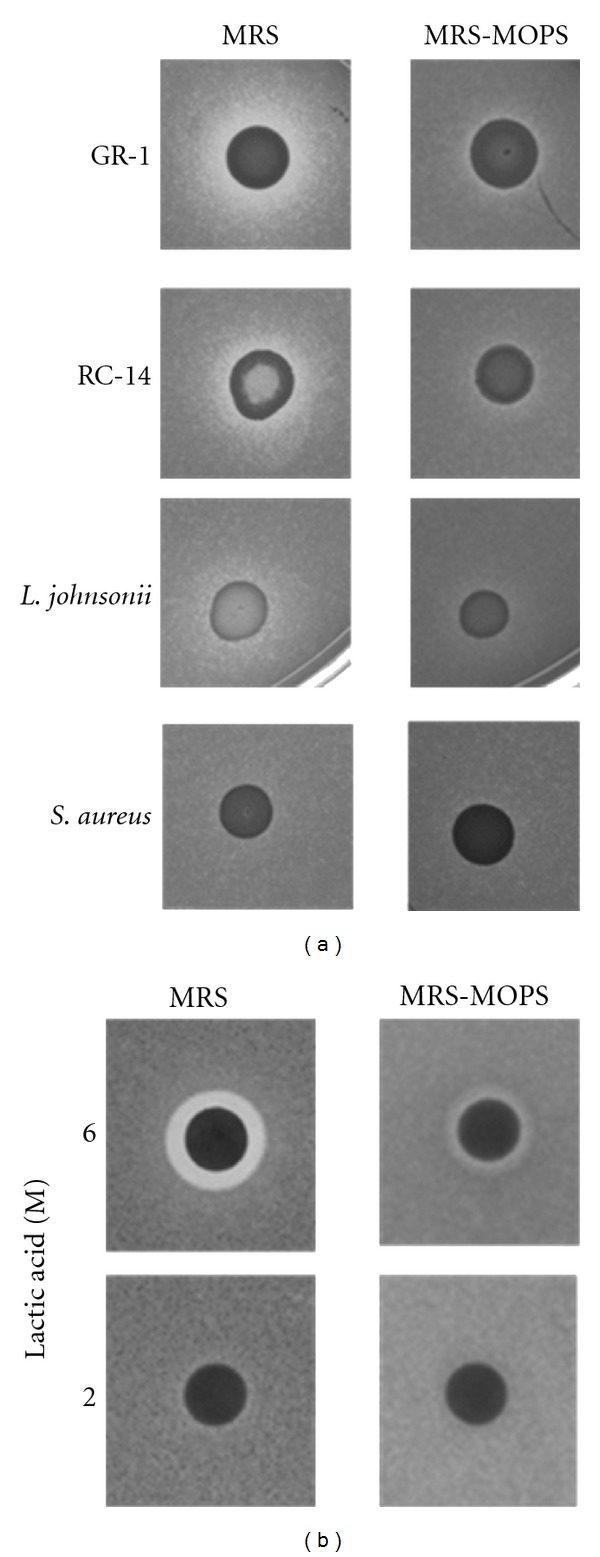Figure 1.

Agar inhibition assays with bacteria, lactic acid, and C. albicans. The images in (a) show the results of deferred agar overlay assays on bacterial colonies (L. rhamnosus GR-1, L. reuteri RC-14, L. johnsonii PV016, and S. aureus ATCC 25923) and C. albicans as the tester organism. The bacteria were spotted on MRS or buffered MRS-MOPS (pH 7.0) plates. After incubation for 48 hrs, bacterial colonies were overlayed with soft agar containing live C. albicans cells and incubated for another 24 hrs. For details see Section 2. A C. albicans lawn developed, but fungal growth was inhibited around the Lactobacillus colonies (clear zones), most predominantly around the probiotic strains GR-1 and RC-14. No inhibition was found with S. aureus. On MRS-MOPS buffered to pH 7 inhibition zones are much smaller or absent indicating reduced effectiveness of the lactobacilli. (b) Shows the results of disk diffusion assays using lactic acid in the indicated molarities (20 μL per disk) as the inhibitory compound. Plates were inoculated to produce a lawn of C. albicans and disks with lactic acid were immediately placed on the inoculated plates. Following 24 hrs incubation, only the 6 M concentration of lactic acid showed an inhibition zone on MRS. Similar to the overlay assays, the inhibition zone on the buffered MRS-MOPS medium was largely reduced.
